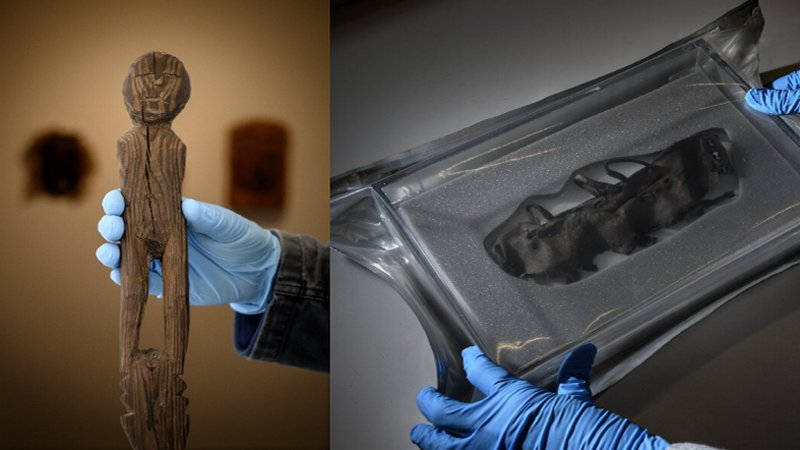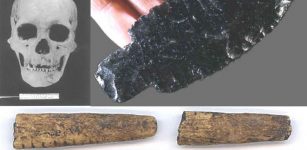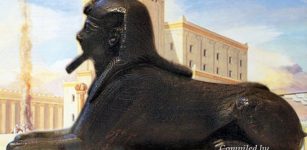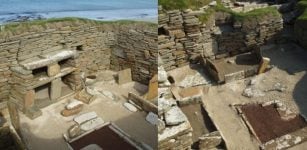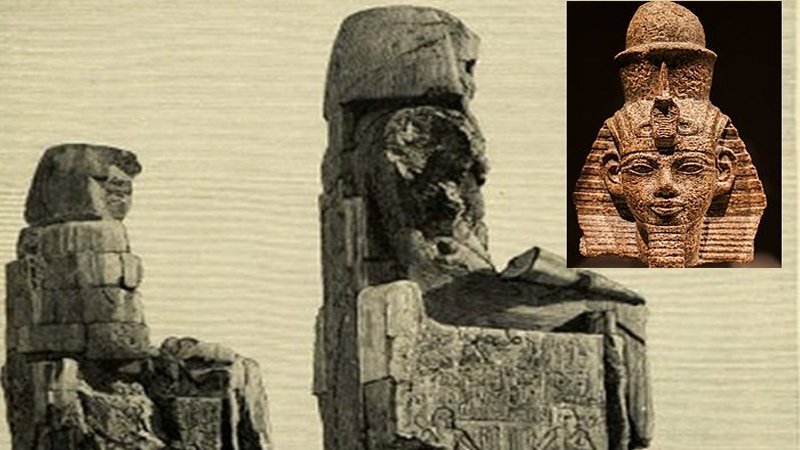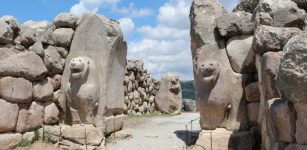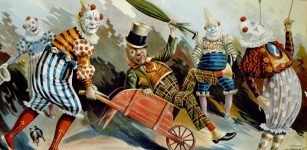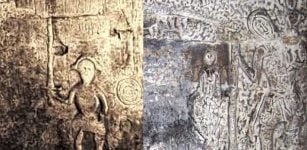Helmet Of Meskalamdug – Sumerian King Of The First Dynasty Of Ur
MessageToEagle.com – The gold helmet of King Meskalamdug (Mes-Kalam-Dug ) was found by Sir Leonard Woolley (1880 – 1960), a British archaeologist best known for his excavations at Ur in Mesopotamia.
Meskalamdug (Mes-Kalam-Dug ) – (“hero of the good land”) was an early Sumerian king of the First Dynasty of Ur, who is not mentioned in the Sumerian king list.
The helmet, which is 22.7cm high, 27 cm long and 21 cm wide, was meticulously made from a single sheet of gold. It has the shape of a wig with carved curls and the bun at the back was created for the king’s hair. The wig-like pattern was hammered from the inside of the helmet. The holes around the edge were placed so that a cloth lining could be sewn in to make it more comfortable.
It is believed that this kind of helmet (rather parade armour, not used in battle) was worn only by kings and high-ranking dignitaries.
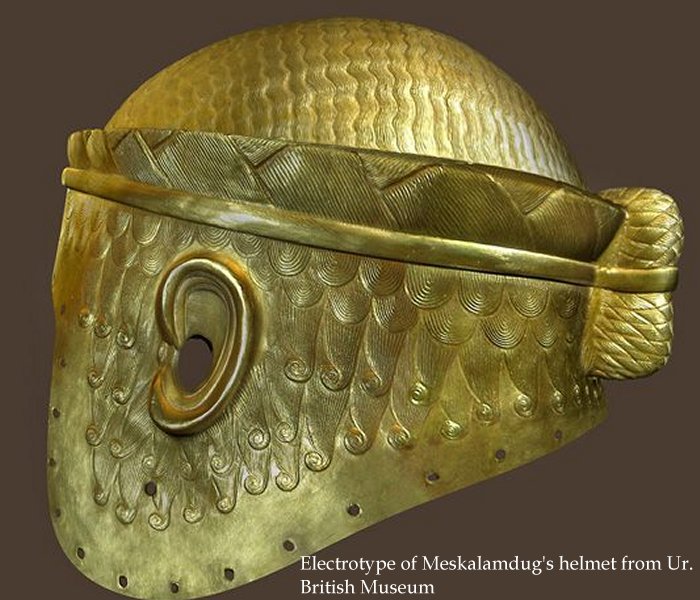
Woolley conducted excavations in Meskalamdug’s tomb, one of the Royal Tombs of Ur of the Chaldees, a city mentioned in the Hebrew Bible as the birthplace of the Jewish patriarch Abraham; the city’s location has been debated.
See also:
Sumerian King List – Ancient Record Of Kingship That Has Long Been Of Great Interest
Sharkalishharri Cylinder Seal From The Fifth King Akkad Dynasty
Kudurru Of Melishihu – Stone Records From The Kassite Dynasty In Babylonia
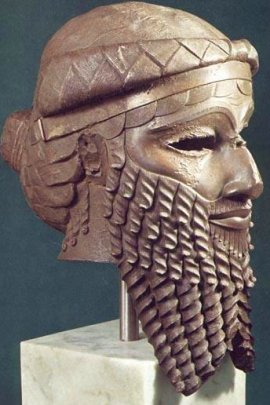
Especially one of the graves contained rich and fascinating objects. At the bottom of a shaft was the body of a man in a wooden coffin.
Many remarkable artifacts were discovered around the coffin, such as spears and vases of alabaster and clay, gold-mounted daggers, copper daggers and tools, fifty copper bowls, silver bowls and plates.
Inside the coffin, the body was accompanied by a gold dagger, lapis lazuli and gold beads, two gold bowls and a gold lamp. Beside the decayed skull was a helmet of beaten gold.
A cuneiform inscription on two of the bowls and the lamp read ‘Meskalamdug’.
The same name (along with the name ‘lugal’) was also carved on a cylinder seal found in another tomb and ‘lugal’ is normally translated as king.
The honorable and traditional title of the king of Kish was reserved for those who ruled over the regions of Sumer and Akkad.
Some of the names of the rulers of Kish refer to Akkad, which suggests the early consolidation of Semitic power located in the northern part of Lower Mesopotamia.
The King of Kish was often an Akkadian ruler who dominated Sumer.
Copyright © MessageToEagle.com This material may not be published, broadcast, rewritten or redistributed in whole or part without the express written permission of MessageToEagle.com
Expand for referencesReferences:
M. Baizerman, Dawn and Sunset: A Tale of the Oldest Cities in the Near East
R. L. Zettler, L. Horne, Treasures from the Royal Tombs of Ur




